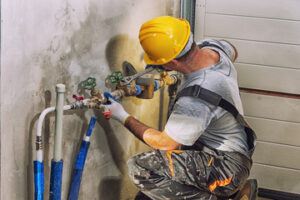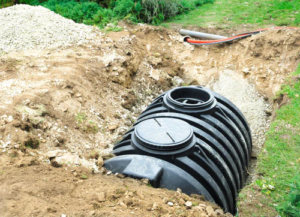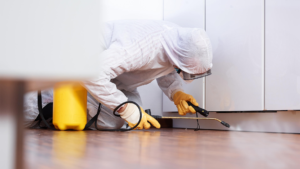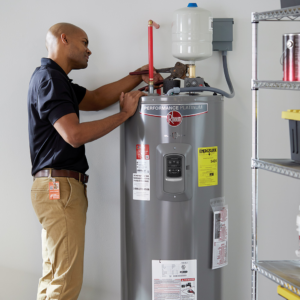Visiting Emergency Dentist Las Vegas can minimize discomfort and prevent complications from untreated dental conditions. While ER doctors can manage the initial symptoms of dental trauma and injuries, emergency dentists are more qualified to diagnose and treat the underlying problem.

Severe toothache, cracked teeth, knocked-out teeth, jaw pain, and loose teeth are considered dental emergencies that should be addressed promptly.
Toothaches are a common dental problem, but not all of them are emergencies. Mild to moderate pain that is caused by chewing or a loose tooth can usually be resolved at your dentist’s office during regular business hours. On the other hand, severe pain and pressure, a swollen jaw, and a bad taste in your mouth indicate that it is time to visit an emergency dentist.
An infected tooth is another common cause of severe pain that cannot wait until regular dentists’ offices reopen. If left untreated, a tooth infection can destroy the pulp chamber and lead to extreme pain and sensitivity. An emergency dentist can treat an infected tooth by performing a root canal or, in rare cases, removing the tooth.
Tooth fractures or knocked-out teeth should also be seen by an emergency dentist as soon as possible to avoid further complications. A chipped or broken tooth can easily develop an infection if the damaged tissue is exposed to bacteria and food particles.
Taking proper care of your teeth can prevent many of the most common dental problems, including tooth decay, gum disease, and broken or cracked teeth. Brush your teeth at least twice a day with a fluoride toothpaste and use floss to clean between your teeth. In addition, limit your intake of sugary foods and drinks, and visit your dentist for regular cleanings and exams.
It is important to know the difference between a dental and medical emergency. While mild to moderate tooth pain may not be an emergency, you should still visit a dentist for treatment at your next appointment. However, if your tooth pain is severe and does not improve with over-the-counter pain relievers, it is time to see an emergency dentist. Additionally, if your toothache is accompanied by swollen glands in your jaw or face, a high fever, difficulty swallowing or breathing, or a facial rash, it could be a medical emergency that requires immediate treatment. An emergency room can give you medications to control pain and swelling, but they cannot perform restorative treatments like fillings or crowns.
Broken or Chipped Teeth
The enamel that covers your teeth is one of the strongest substances in the human body, but even it has limits. A blow to the mouth, falling, or biting down on something too hard can cause a tooth to crack or break. When this happens, you should contact an emergency dentist as soon as possible. Depending on the severity of the break, you may experience pain, bleeding, or swelling.
If you break a tooth, rinse your mouth with warm water to clean the area and avoid infection. You can also take an over-the-counter pain reliever to alleviate any discomfort. Applying a cold compress to the outside of your mouth, cheek, or lips can help reduce any swelling. In addition, if your broken tooth has any jagged edges that could cut the inside of your mouth or cheek, you can cover them with dental wax or temporary bonding material. These products are available in most drug stores or online.
While it is possible to treat minor chips at a regular dental appointment, it’s important to see an emergency dentist for more severe breaks. This is because the damage can expose the inner nerves and blood vessels of your teeth. This can lead to serious bacterial infections and other complications down the line.
In some cases, a cracked or chipped tooth can become worse and require more extensive treatment, such as root canal therapy. In addition, if left untreated, it can lead to the loss of the tooth altogether.
It’s often hard to know when a broken or chipped tooth is an emergency, since these types of injuries can occur at any time. But according to the ADA, it’s considered an emergency if you have extreme pain, bleeding, or swelling.
Fortunately, your local emergency dentist can address many of these issues when you call their office at night or on the weekend. This can save you from the inconvenience and expense of visiting an ER or urgent care center, which will likely only offer over-the-counter painkillers and antibiotics that don’t address the underlying problem.
Knocked-Out Teeth
Every year more than 5 million kids and adults experience having a tooth knocked out. Fortunately, this dental injury doesn’t necessarily mean having a gap in your smile for the rest of your life. With prompt emergency treatment from our dentist, it is possible to save a knocked out tooth (also known as avulsed) and even have it replanted in its original socket.
Knocked out teeth are most commonly caused by accidents such as a fall, sports injuries, or car crashes. However, weakened teeth from poor oral hygiene can also cause a tooth to dislodge.
If you or someone you know experiences a knocked out tooth, the most important thing is to remain calm and contact an emergency dentist immediately. It’s best to rinse the knocked out tooth with water but avoid scrubbing or scraping the root. It’s also important to hold the tooth only by the crown (chewing edge) and not the roots to prevent damaging the ligaments that keep the tooth in place.
Getting to the dentist as soon as possible — ideally within 30 minutes of a tooth being knocked out — is the most important step for preserving the tooth and having it replanted. A knocked out tooth will begin to dry out and the chances of successfully replanting it will diminish quickly.
Once in the dental chair, the emergency dentist will gently flush out the socket to remove any bacteria or debris that could hinder reinsertion. Then, the dentist will reposition the tooth and check for alignment before splinting the tooth to adjacent teeth to help it stay in place.
After the tooth has been repositioned and treated, it is important to follow the dentist’s instructions for home care to speed up the healing process and ensure success. For example, eating soft foods and liquids can help protect the tooth until it is fully reintegrated into its permanent position. In addition, a patient should brush and floss their teeth regularly to prevent infections. Lastly, patients should schedule regular checkups to see our dentist to make sure their tooth is growing in properly and avoiding any future dental trauma.
Broken Oral Appliances
As more and more people rely on dental implants, dentures, and bridges for their oral health, there are an increasing number of cases in which these restorative solutions require immediate attention. While a dentist may be able to repair or replace these appliances, many patients will need to visit an emergency dentist to get help with a broken jaw, tooth, or other severe dental injury.
The most common dental emergencies are related to broken oral appliances, such as braces and dentures. These devices are designed to withstand chewing pressure, but they can still break when they are subjected to too much stress, dropped, or accidentally damaged. Dental appliances can also become dislodged or misaligned if they are not properly cleaned, which makes them more susceptible to breaking.
It is important to treat a broken oral appliance as soon as possible to prevent it from worsening and reduce the risk of infection or other complications. An emergency dentist will be able to provide prompt treatment and relief from pain, and can restore the function of your mouth.
Depending on the type of dental problem you have, an emergency dentist will recommend different treatments. For example, if you have knocked out a tooth, the emergency dentist will advise you to place it back into its socket immediately (if this is possible), as this can increase the chances of saving it. They will also likely instruct you to use a cold compress and bite down firmly on the area to control bleeding.
Emergency dentistry services can be provided by a variety of healthcare providers, including urgent care clinics and emergency rooms. However, it is usually better to visit an emergency dentist in Manhattan because they are trained in treating dental emergencies and have the equipment needed to do so quickly and effectively. Emergency room personnel are more suited for treating life-threatening conditions such as severe bleeding, facial injuries, and jaw fractures or dislocations.
It is also important to note that even if a dental injury is not considered an emergency, you should still seek treatment as soon as possible. Ignoring a dental problem can lead to further damage, infections, or even permanent loss of the tooth.








